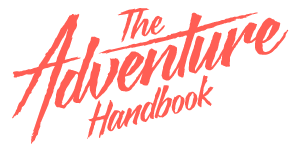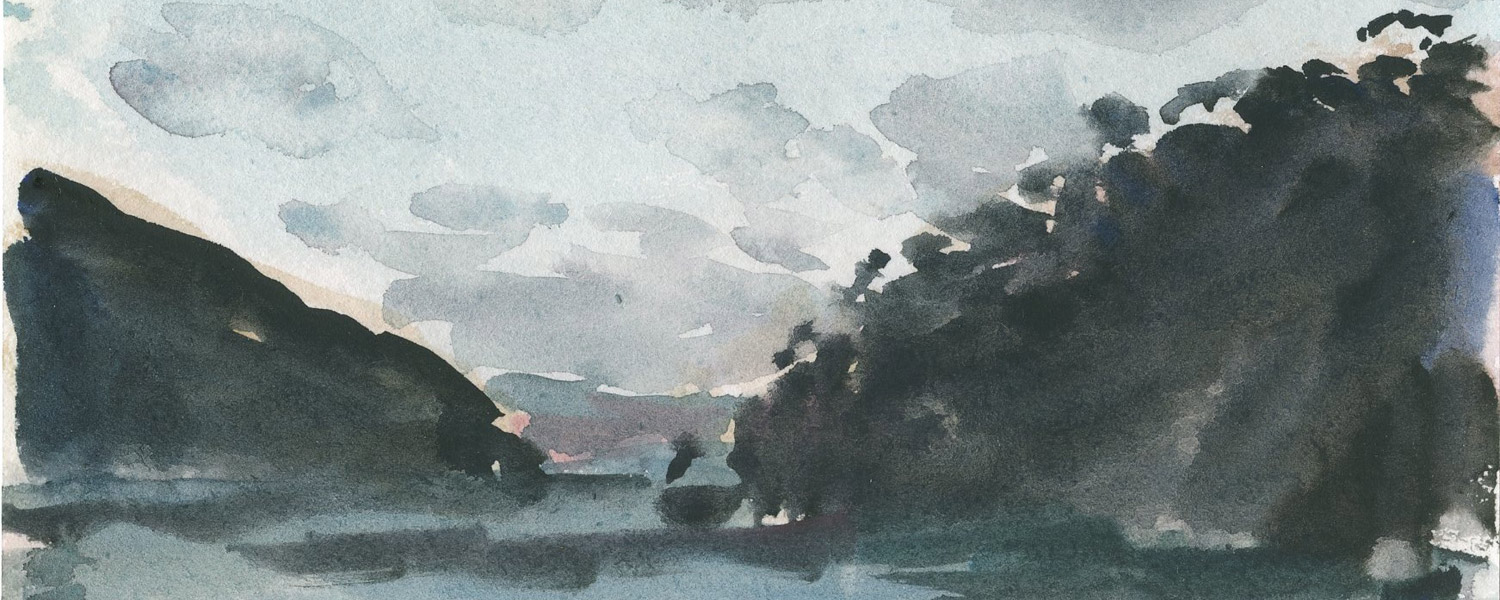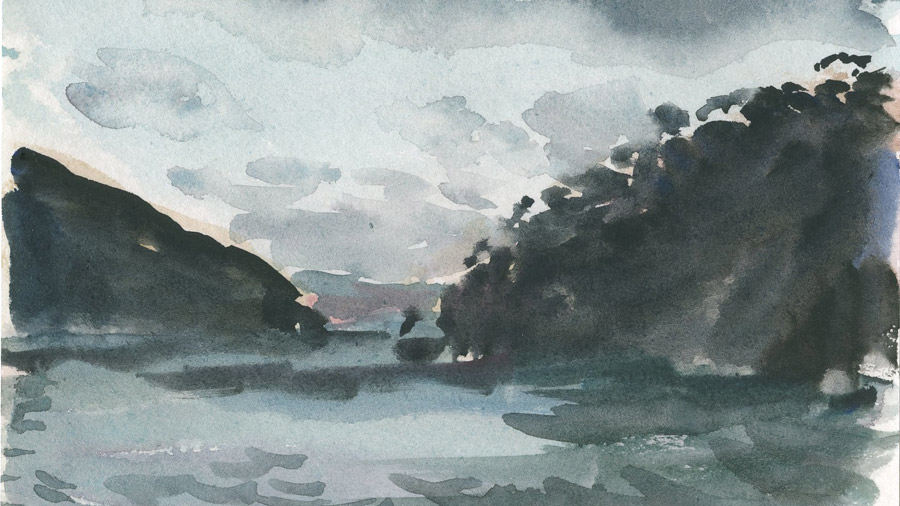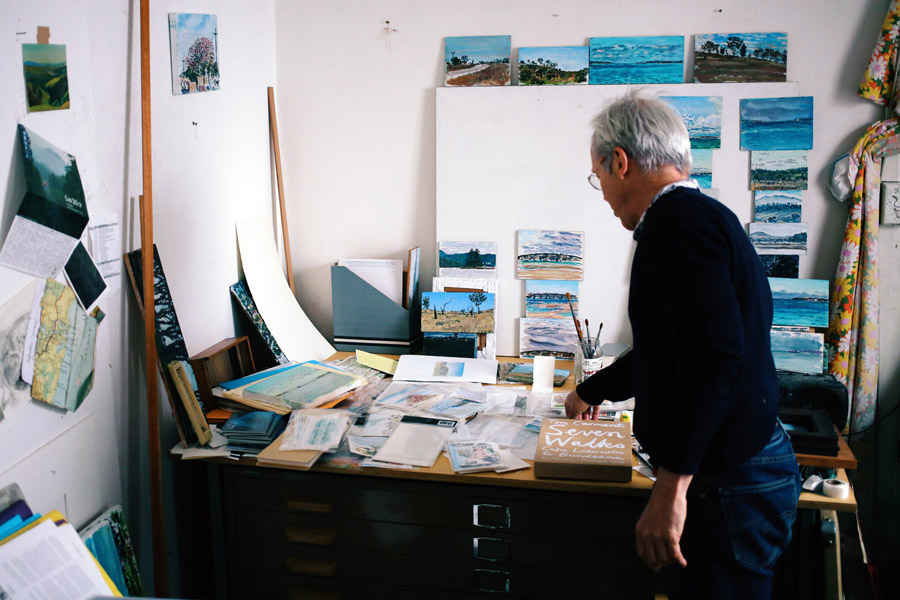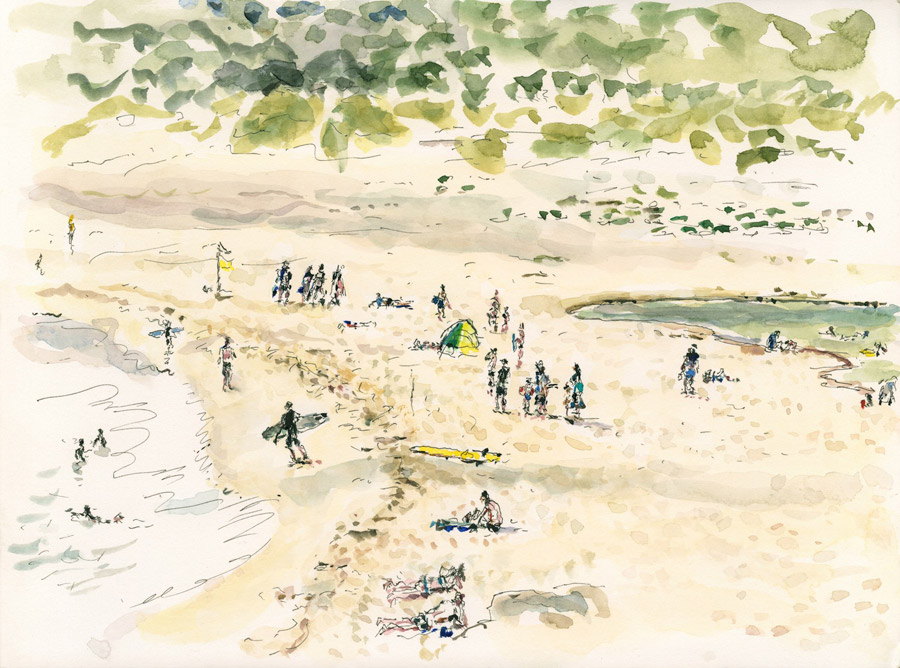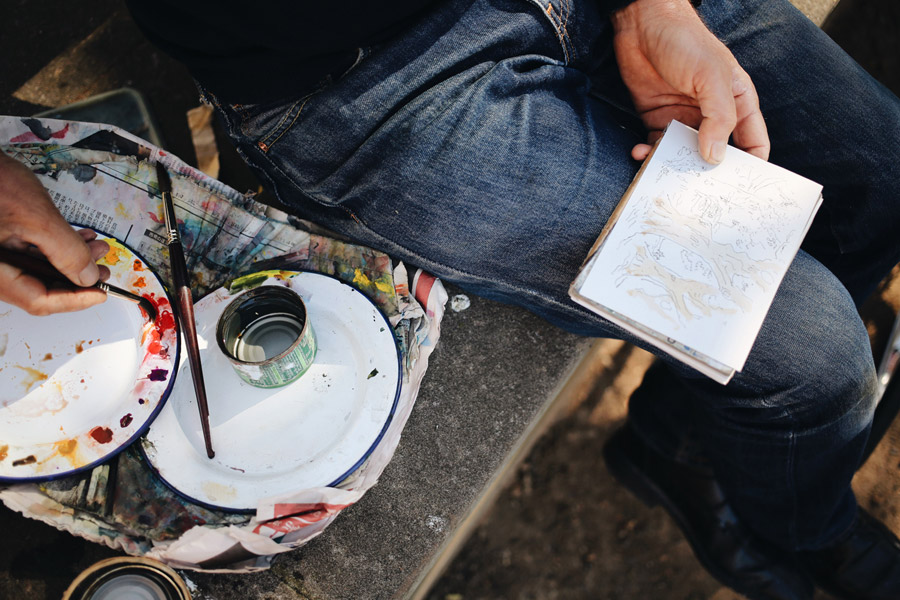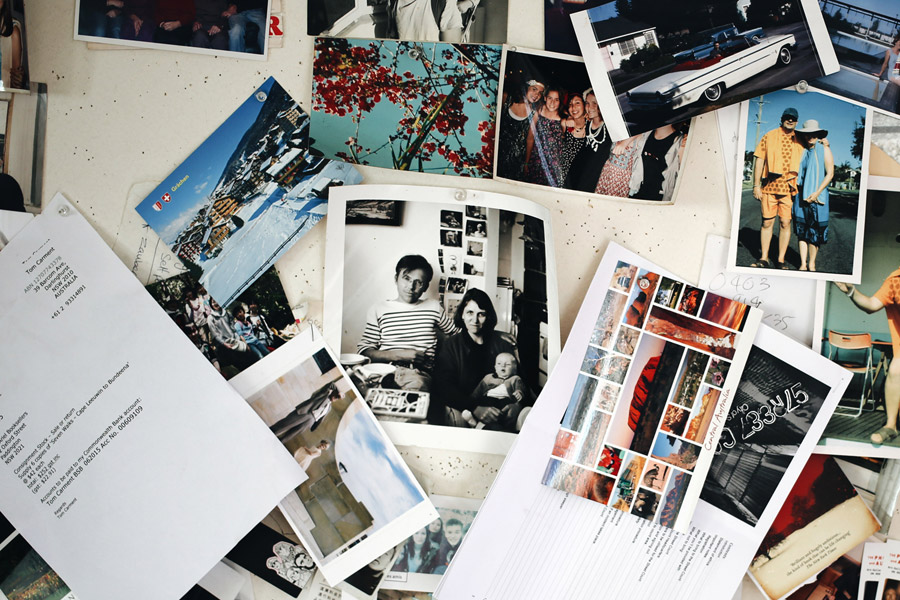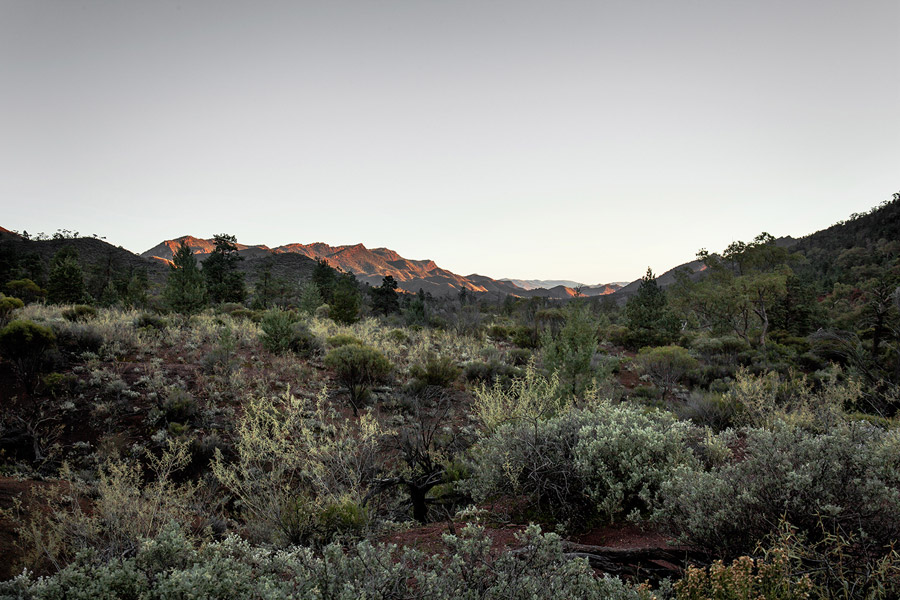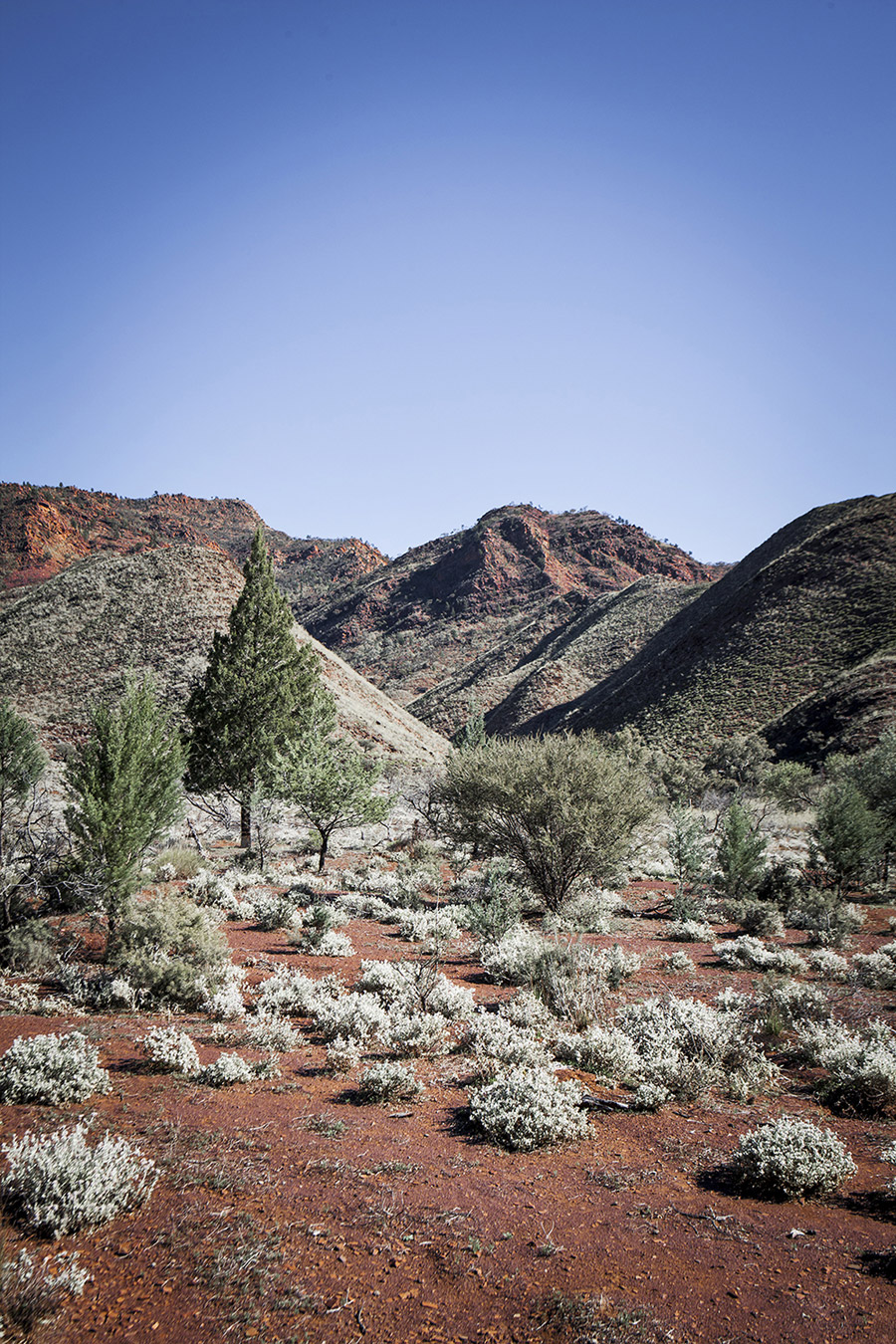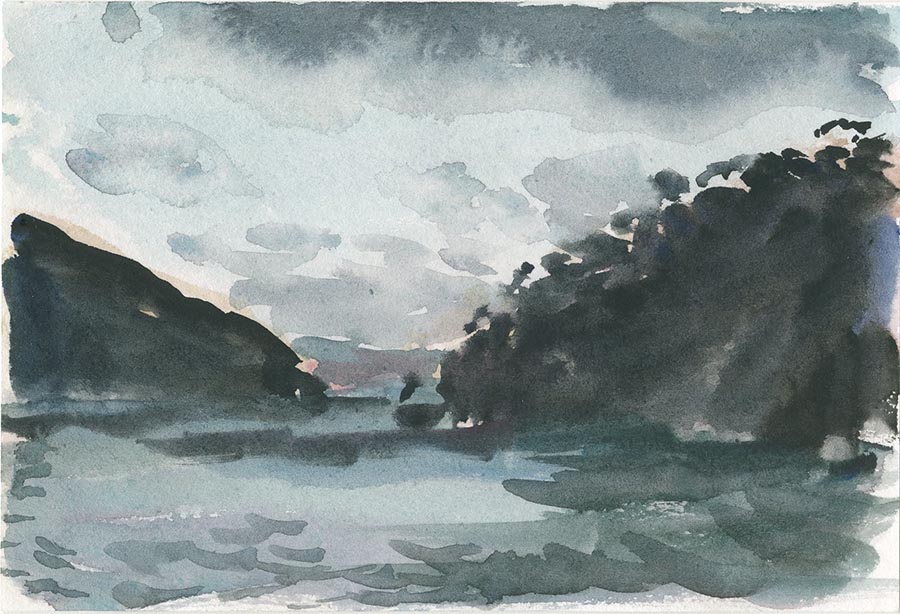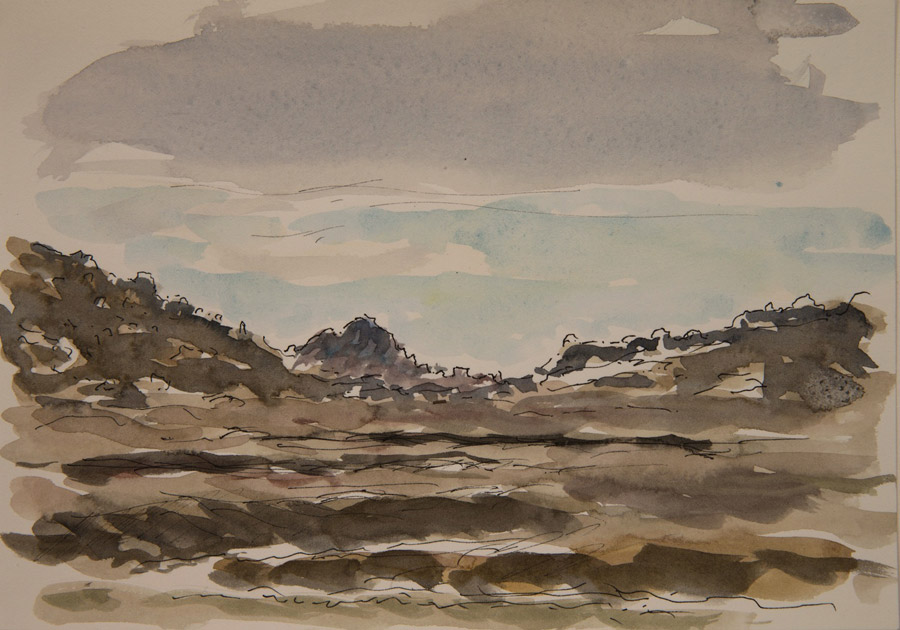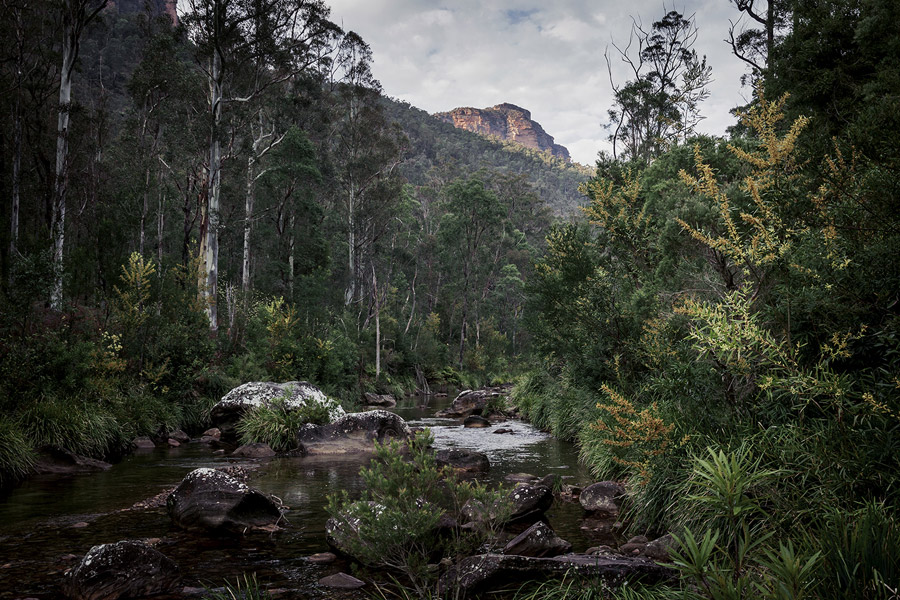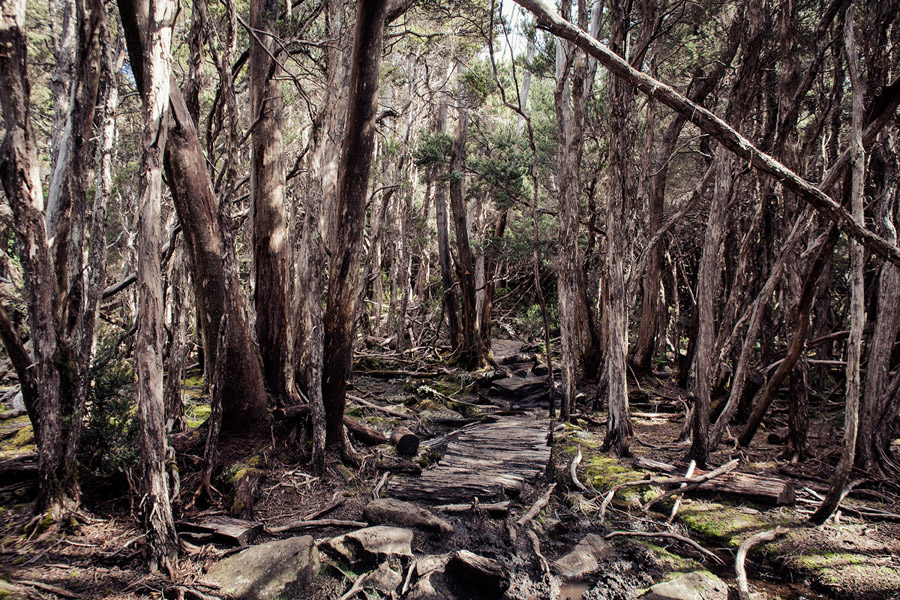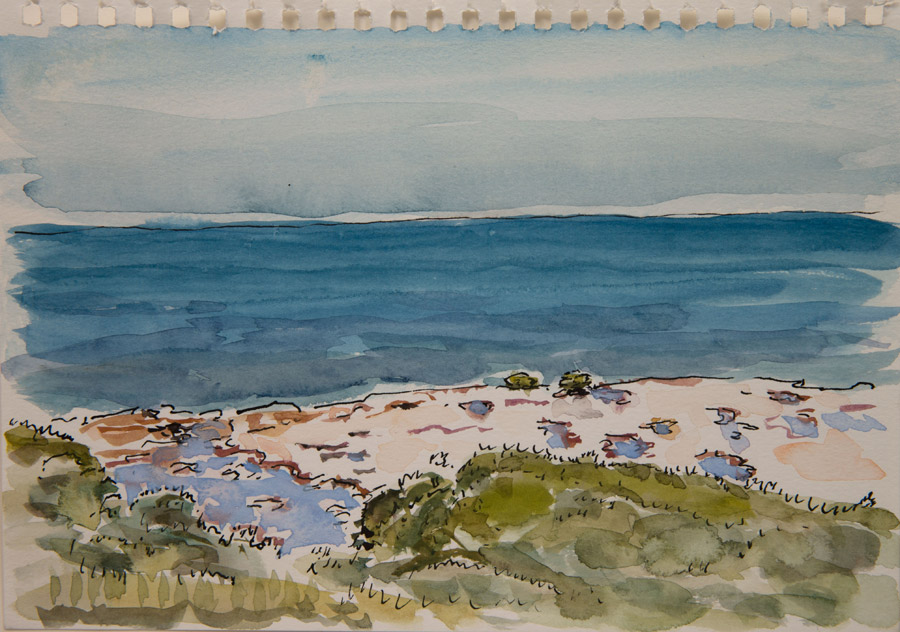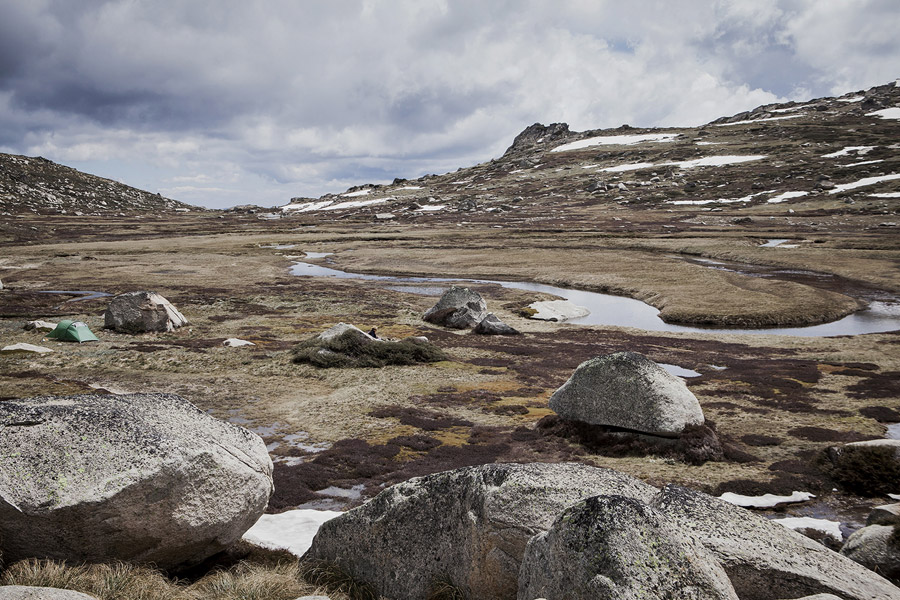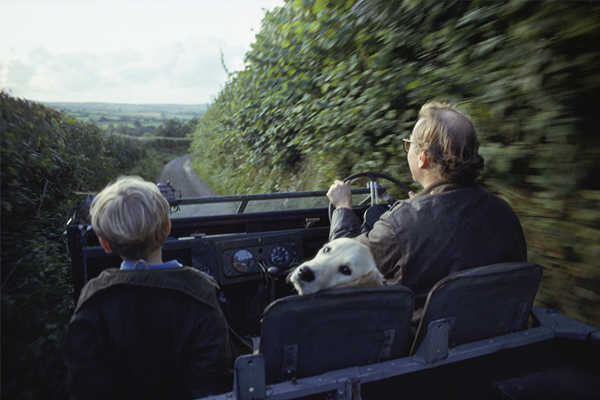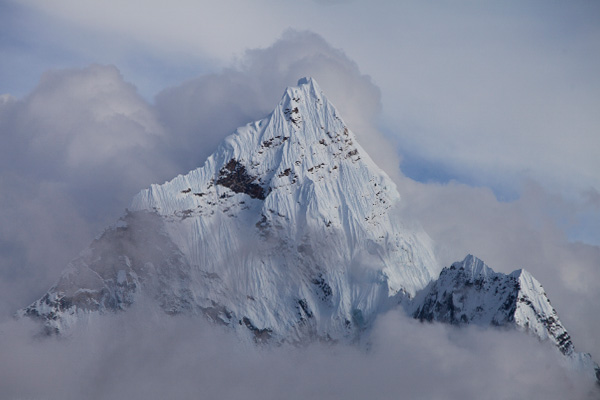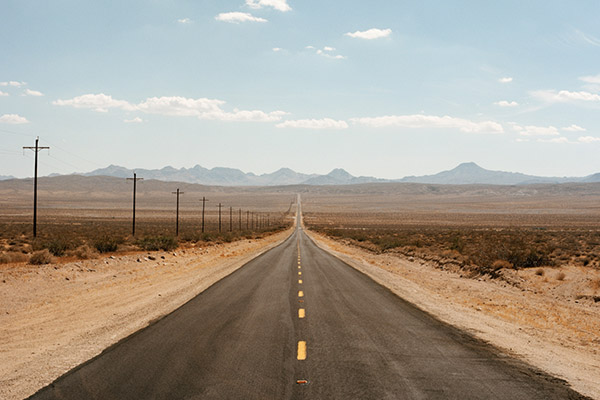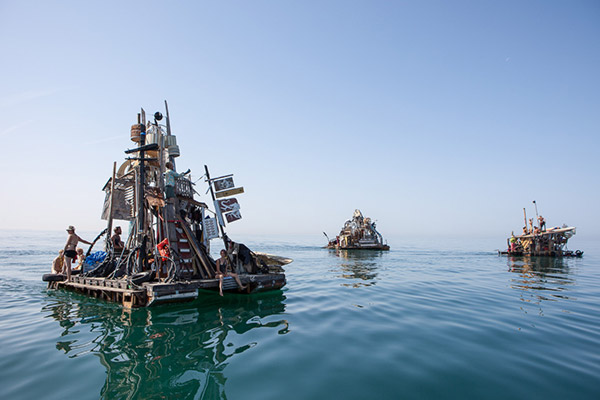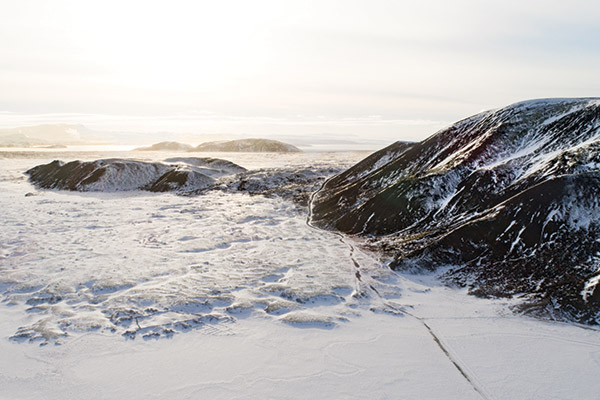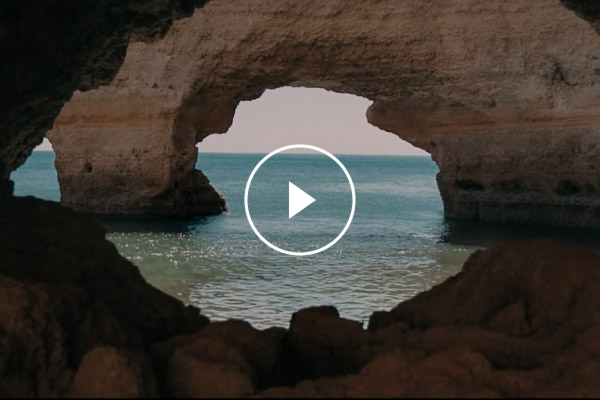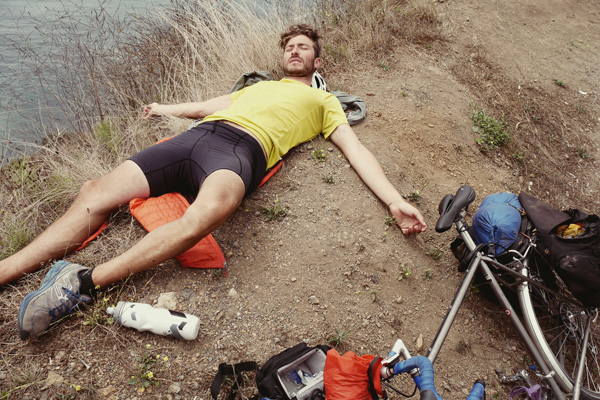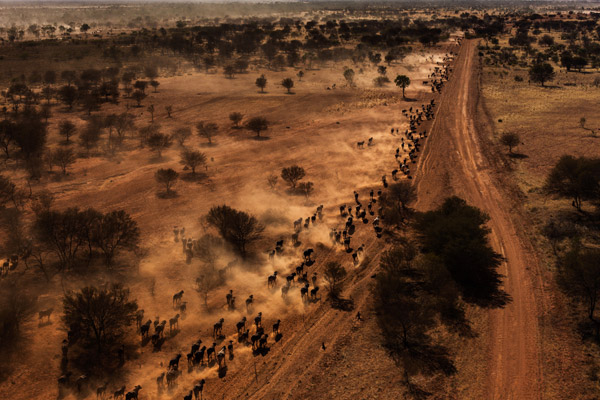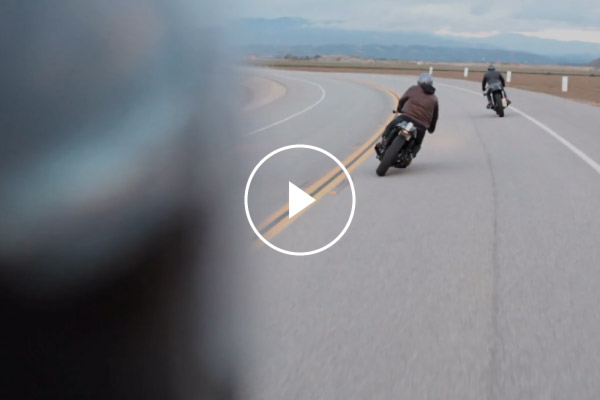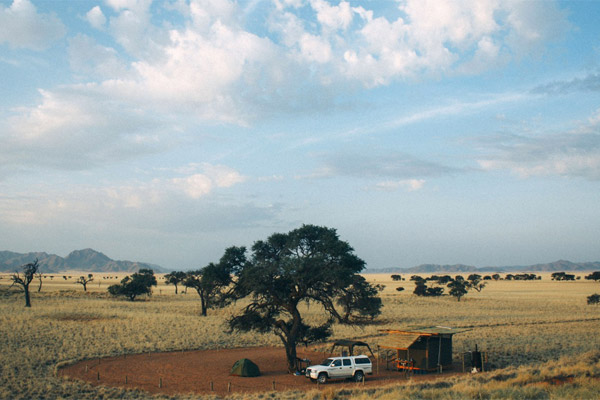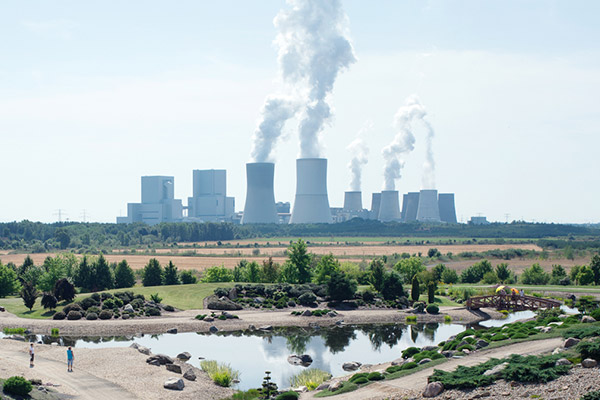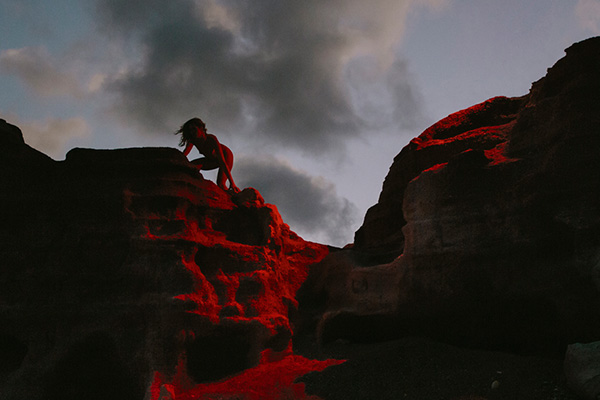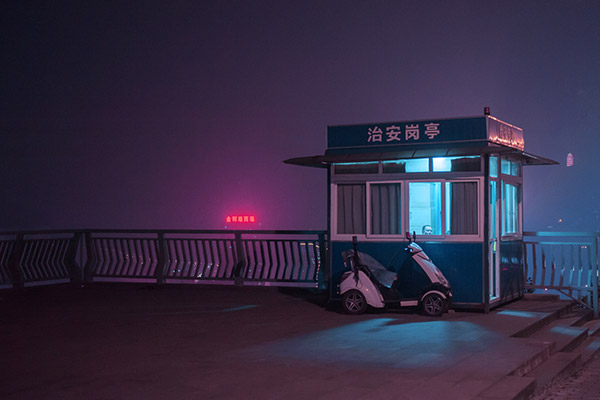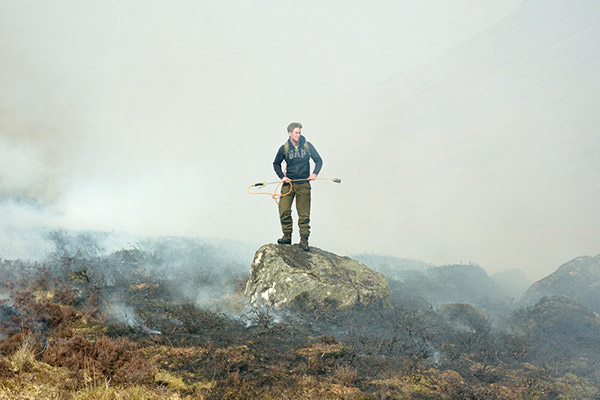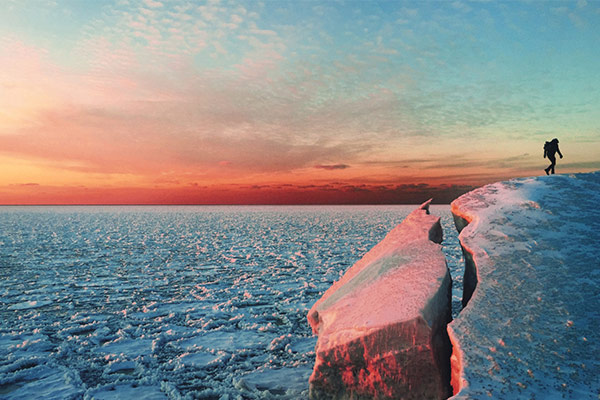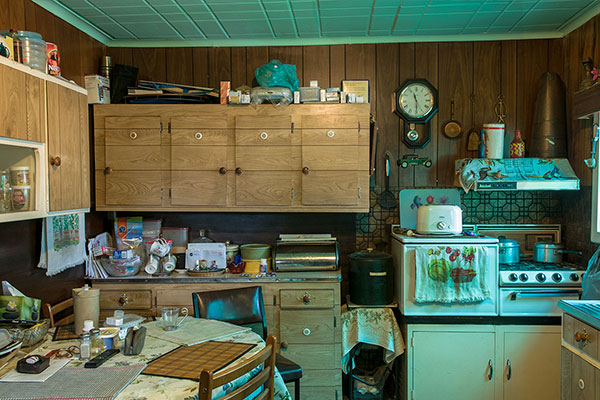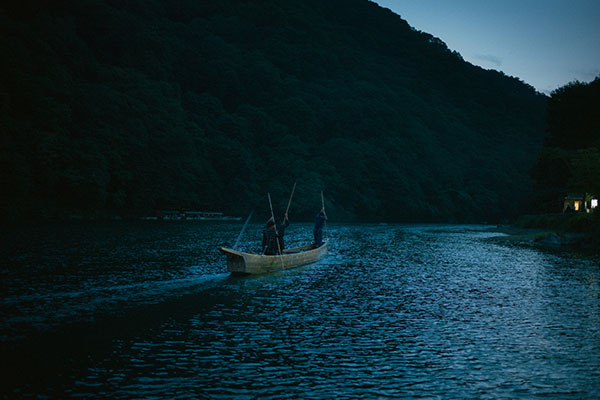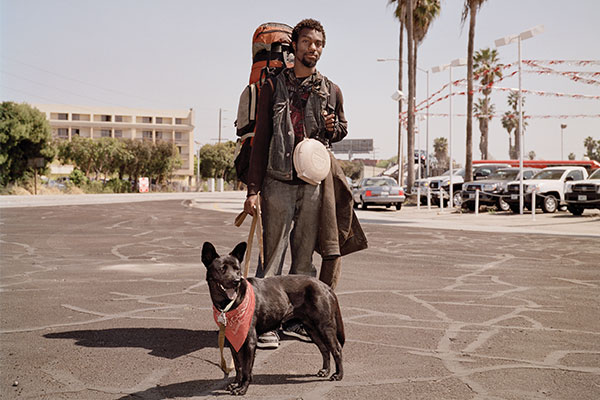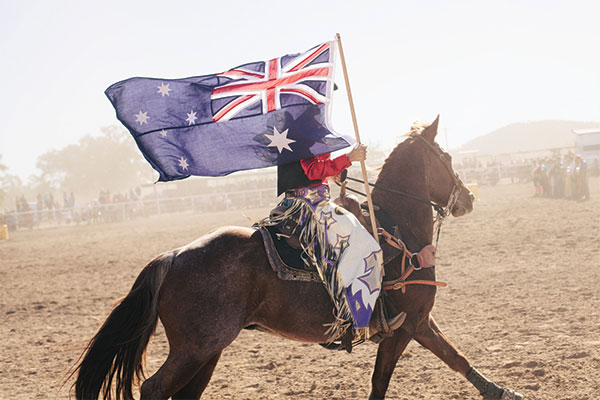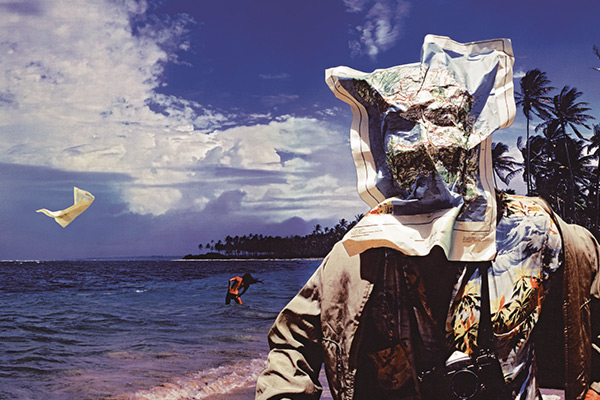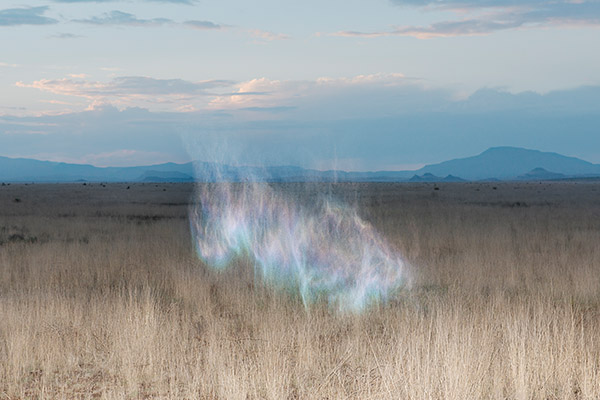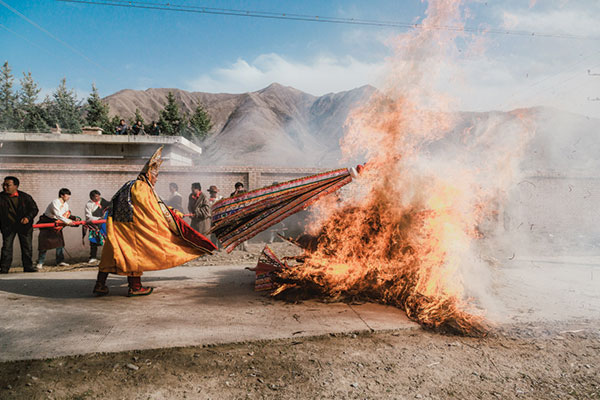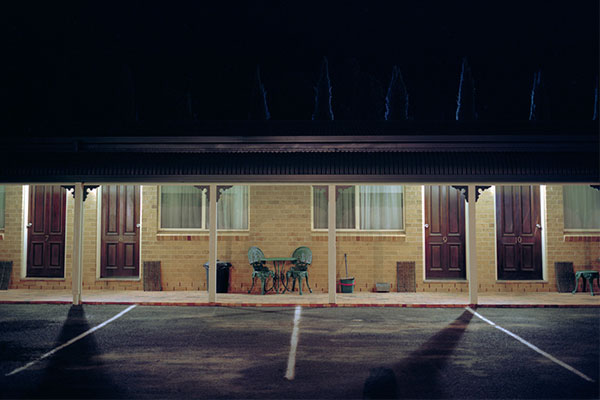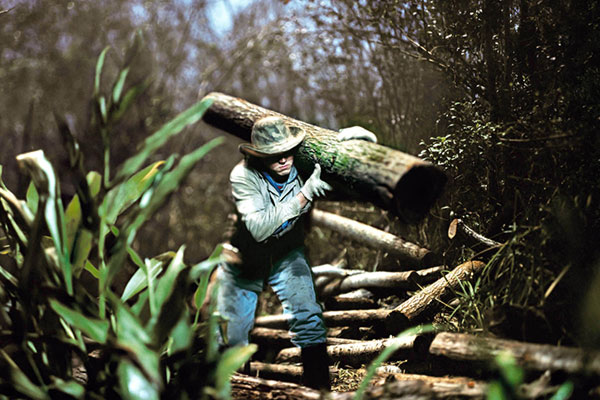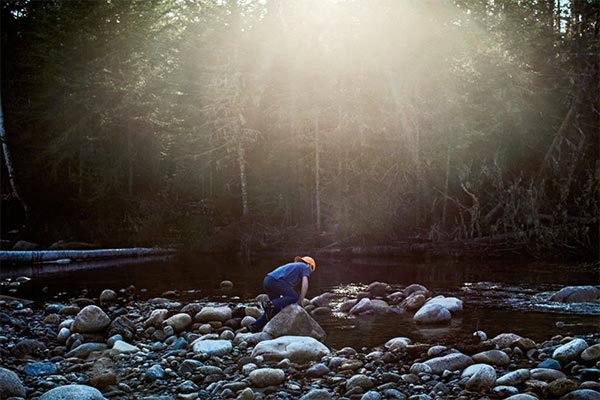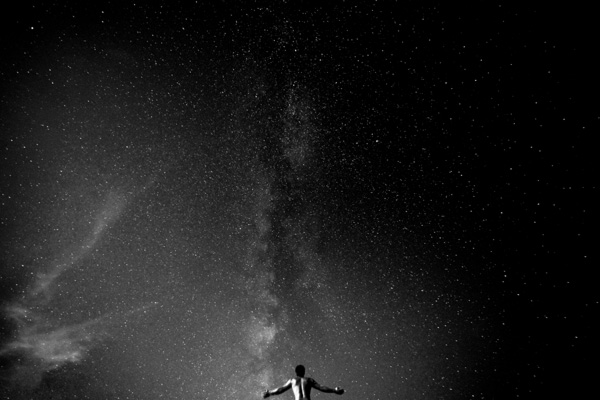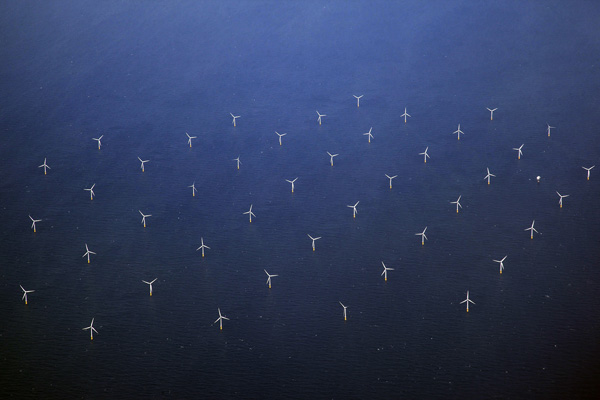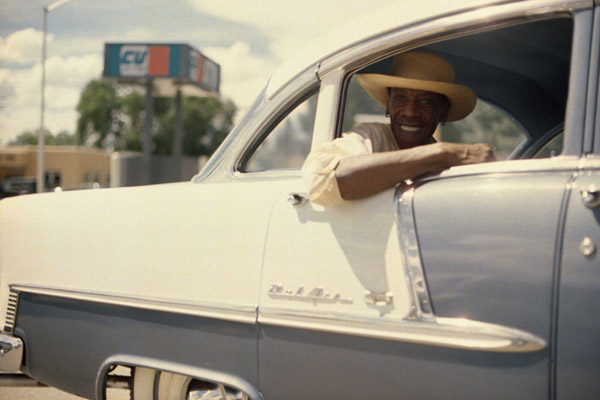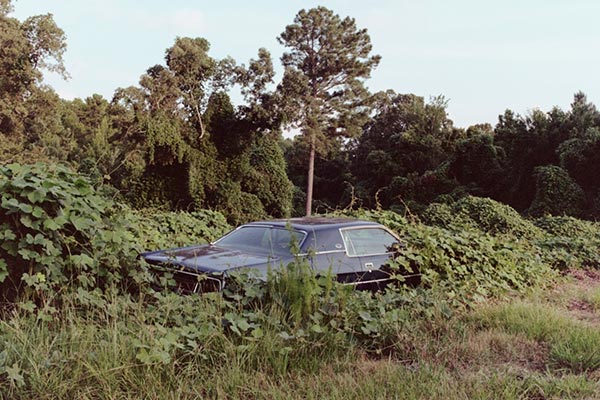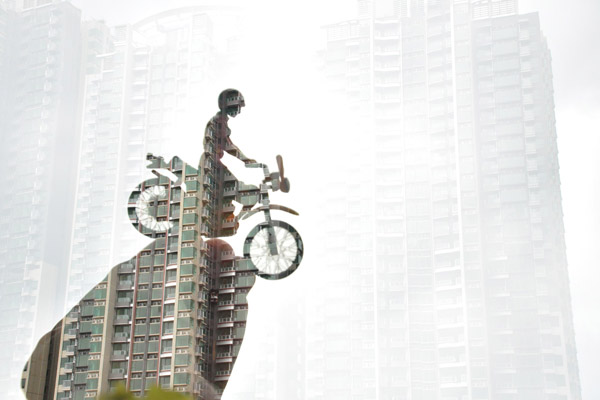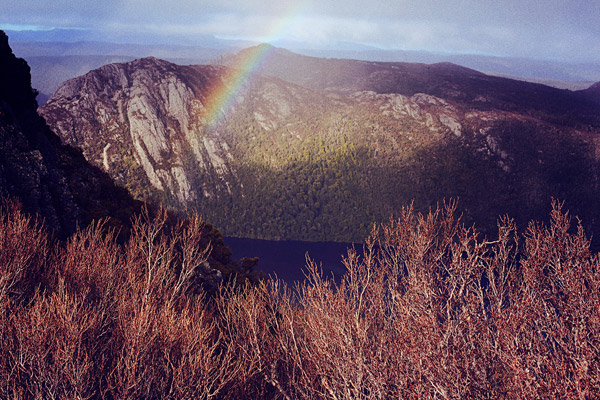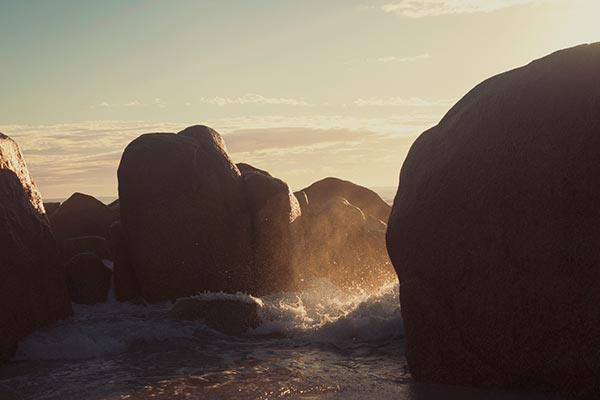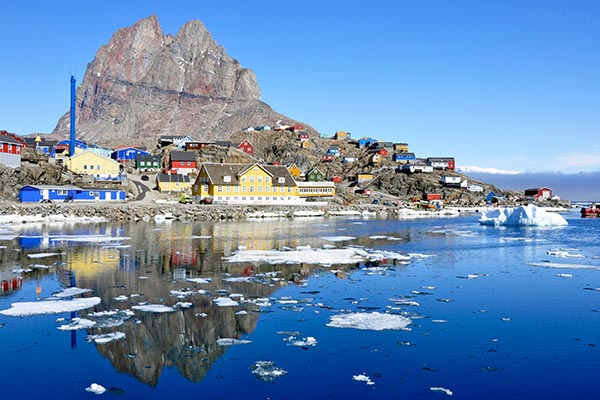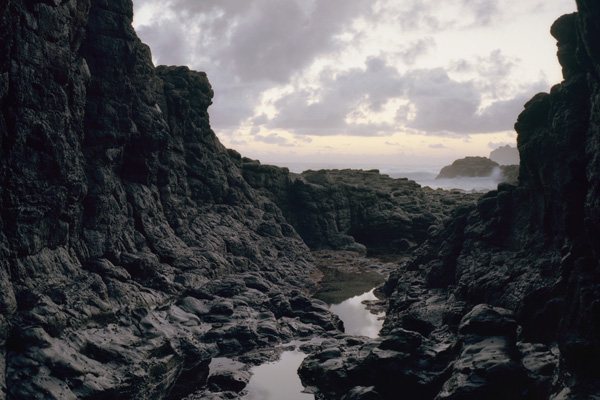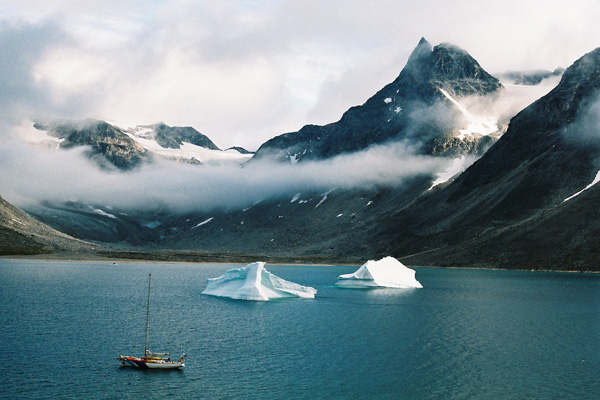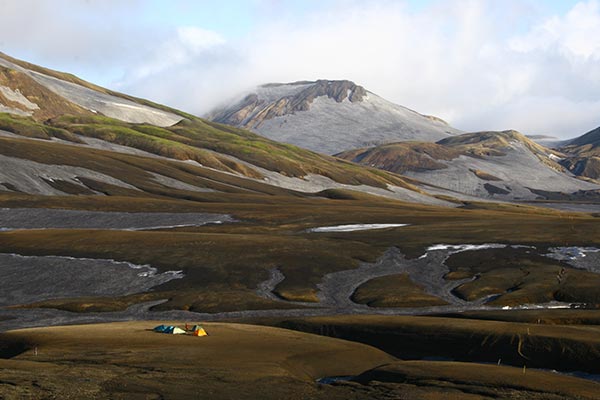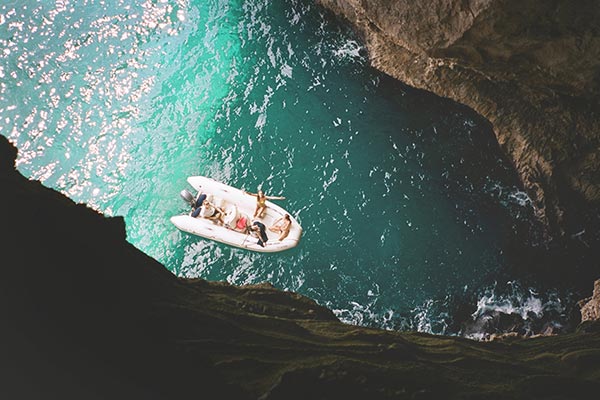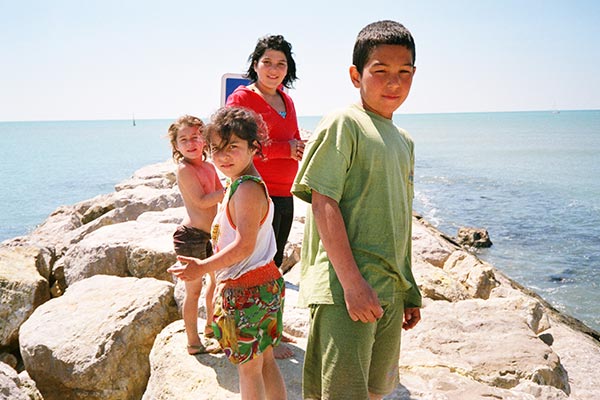While cycling about in remote South Australia Tom was bitten on the neck by a reback spider and, after suffering through the night, made it to hospital the following day to be dosed up on two bags of anti-venom.
Ché Parker: As a child, were you drawn outside? Did you roam?
Tom Carment: Yeah, I walked around a lot as a kid, growing up in the ‘60s you were sorta let out in the morning and you’d come in at night and your parents didn’t worry about you too much, which was really nice. And I had older siblings, so in summer holidays I remember just wandering off and we’d go to the ocean baths and harbour baths and spend most of our day there. We’d go around looking for bottles back when they had bottle refunds so we could go to canteens and buy ice creams. So I remember those idyllic days wandering around by myself.
And your love of the landscape, was it inspired by others or did it emerge intrinsically?
I’m not sure… I think when I was a kid I just loved being in the landscape. I was lucky that I grew up in Sydney quite near some bush so I’d just go out into it and I’d feel so peaceful there. I really liked it and I remember even at quite a young age thinking that I’d really like to paint this.
I was lucky that I grew up in Sydney quite near some bush so I’d just go out into it and I’d feel so peaceful there. I really liked it and I remember even at quite a young age thinking that I’d really like to paint this.
What significance does the Australian landscape hold for you?
I realised its significance when I spent time living overseas. I lived in Europe for a while, and Africa too, in the 1980s. While I loved where I was, I really missed certain things about the Australian landscape. I think it was the quality of light, the feeling of space, the ragged quality about the trees, the random disorder of the Australian eucalypts, and the ancient feeling of the geology of the landscape. And in summer the sharpness of the shadows is quite unique.
You’ve said that you paint from association over spectacle. Could you expand on what you mean by that?
I think there’s a lot of landscape out there and you could be overwhelmed by choice, so I think you feel more for a landscape where you’ve spent time with, say, your family, something like that. I used to go and stay on my friend’s sheep station in South Australia every year, for twenty years. I’d go there at shearing time so there was this association with people and industry in that bush. Although, it could have been a national park; they never overstocked that land, it was only one sheep to every 13 acres. It was a wilderness of myall trees and saltbush. There’s that feeling of history with my friend that enriched that landscape for me. So, you know, the Middleback Ranges, which ran through their station, aren’t as spectacular as the Flinders Ranges, but I used to really enjoy painting that place, as I do places in Ku Ring Gai where I used to take my kids.
It’s nice to revisit a place. With travel there’s a fetishisation of ticking off all the destinations; I was guilty of it as a keen young backpacker. But increasingly, I want depth, not breadth.
Definitely. I like redoing walks that I’ve already done because it’s always different: different seasons; different light. And I think as you get older you look at things in different ways. There was one particular paddock on the station, called Two Mile Paddock, and to get myself going I’d paint it every trip. And it was interesting, I’d think “Oh, I’m repeating myself,” but when I got back and compared it to the last painting I’d done the year before it was always a bit different. The landscape there is very slow growing, as opposed to Sydney or Brisbane, where there’s a lot of quick change. Out there the myall trees are very old, they grow very slowly. That was the interesting thing about painting there. Over twenty years the trees slowly changed shape in Two Mile Paddock, though everything else still looked much the same.
How did art come to have a central role in your life?
My mother had studied architecture, she had a bit of interest in art… I remember the first time I saw a really interesting painting on the wall of a house was when visiting my grandmother and she had a reproduction of a piece by Hans Holbein the Younger on the wall; it was of two merchants and I used to stare at that painting and think it was so wonderful. Later on I became close to my cousin, whose husband was a landscape painter called Joe Conroy. They were my first really strong lead into the art world and the possibility of living as an artist. My dad was a practical man, he wanted me to have security. I used to like picking up rocks and he said “Be a geologist, son”. Then he said “Don’t be a geologist, son, you’ll have terrible trouble with the Unions.” And I think he was worried, when I wanted to be an artist, that it would be tough to make a living. But then later on in life he got behind it and was quite proud that I’d stuck with it. He was reconciled to it in the end.
And writing as a pursuit?
I’ve always enjoyed writing; at school my best subject was English. I read a great deal. Early on I decided to be a painter, but I used to write long letters to friends in those days, when you corresponded a lot. When I went to Africa in 1981 I’d write long letters home and recently my cousin gave me back a letter I’d written to her and it was 48 pages! Then I started keeping a journal. I think in 1981 or ’82 I wrote an essay for the Sydney Morning Herald about being in Zimbabwe just after independence and they published it. And then I started writing these stories about my time in Africa and showed it to a friend who was a publisher, and that was my first book, Days and Nights in Africa, it was a collection of these short prose pieces. I accompanied it with my paintings and drawings. It wasn’t a huge bestseller, but David Malouf gave it a really good review, so I was encouraged to think that maybe my writing was OK. For the last 15 to 20 years I’ve kept a journal almost every day. I don’t write “Oh, I’m really feeling bad today, life’s a shit sandwich” sort of things, but I write observations. I write down things that I notice. It could be conversations, visual things or incidents.
I’ve always enjoyed writing; at school my best subject was English. I read a great deal. Early on I decided to be a painter, but I used to write long letters to friends in those days, when you corresponded a lot.
Your practice sustains you now, but what were your younger days like?
It was a mixture. I went to art school for one year, at Julian Ashton’s Art School, and then I just sort of went out into the world. People were saying to me “That’s a bit foolish,” but I’m lucky I met other artists who showed me things, like my friends Joe Conroy, and Ted Hillyer. I met a young writer called Robert Gray who was very interested in art, who guided my reading and looking when I was around 19. I met Brett Whitely when I was 19 or 20 and I got a job painting his house. I used to help him with certain errands like fixing his picture frames and things like that. And I met a painter called Max Miller who taught me about mixing colours and stretching canvases. So I learnt different things from different people. At a young age you’ve very hungry, and you’re quite brazen in wanting to meet people who can teach you something. I’m very grateful that those people showed me things at that time.
As a plein air painter, are all your works of the moment, in situ, such that there’s never any studio work?
Very rarely. Sometimes when I bring something home I might quickly change something. But even with my portraits, I don’t like to touch them unless I’m in front of the motif. I find if I start fiddling around with things at home it’s not as bold as when I was out there. I’ve become a bit timid in the studio, where-as when I’m out in the landscape I feel much freer for some reason. And I believe the work I do from life is better than what I’ve done in the studio. I’ve just sort of specialised. It’s a bit like a writer saying they’re going to work within certain parameters. By being a plein air painter I’ve restricted myself. But I’m very happy within those restrictions; I find a lot of freedom.
I’ve become a bit timid in the studio, where-as when I’m out in the landscape I feel much freer for some reason. And I believe the work I do from life is better than what I’ve done in the studio.
What is it about the act of walking that you find rewarding?
I find it calms me down. When you’re walking, you see things you wouldn’t notice when driving a car, or even riding a bicycle. I think the slower you go the more you see, of course. Sometimes when I stop, even to pee on the side of the track, I might see something and think “Ohh that looks interesting”, and I paint it. But I might move a few meters. And when you stop in the bush, you realise how noisy your boots were, you start hearing all the bird songs and noticing things. It’s very different to being in a car. Sometimes when you’re driving you’ll see something through a screen of trees, and when you pull over in the car, you can’t see what you saw when you were driving along, it was a combination of images you were putting together in your brain. But doing a longer walk, it is a kind of meditative thing, you get into a rhythm. At the end of the day you feel really tired, but you feel really good.
Walking by yourself is quite a different experience. Definitely nice to do it once in a while…
I like the mixture of sometimes walking without others; I really enjoy a day by myself in the bush. Other times, I think if you’re with people you want to be with, it’s a really nice way to have a conversation, because it’s so prolonged. You can have moments of silence. You can walk along silent with a good friend for a half an hour and it’s not awkward, it just feels natural and then you can start talking again for a while. And I think that the discussion or the discourse goes a lot deeper than it would at a dinner party with a bunch of friends, it’s a different sort of conversation. I found also that when we walked with my two sons and daughter on the Cradle Mountain walk, they asked me and my wife Jan questions they wouldn’t normally never ask us, even around the dinner the table. They started questioning and quizzing us about our teenage years, and what we did when we were young, and what my first job was like. They started asking us questions and we had a really different conversation than we’d normally have at home. It was good. I think that the conversations that you have on walks are interesting. Although, you could get someone who doesn’t shut up and drives you nuts, and you think, why have I gone walking with this person? But I haven’t often found that.
That difference you mentioned between trying to converse at a dinner party, where it’s forced, rushed… where silence is awkward and you gotta plough through it and just keep on talking, it can actually be very limiting. But on a walk…
On a walk you don’t have eye contact either, which is interesting. You’re not looking at the face of the person you’re talking to. True… It’s freeing, you feel more comfortable in taking your time to contemplate, reflecting on what’s being said to you before you respond. Conversations can be continued intermittently. Like with your children, one question naturally, gradually leading to another.
Do you ever find that you’re valuing the landscape according to how it might look on paper, perhaps interfering with just a straight up appreciation of the land?
Hmm, there could be that sort of thing, thinking “Well I should be painting this” or “I could just not.” My partner jokes about me, when I’m on holidays I’m always wanting to paint, but for me it’s my way of being in the landscape. I don’t have to, but when I see something I like I love to paint it. There’s times when I can just be in the landscape without painting or drawing, it’s a little bit rare, but that’s quite a liberating thing to do.
Receive a postcard from us sign up

